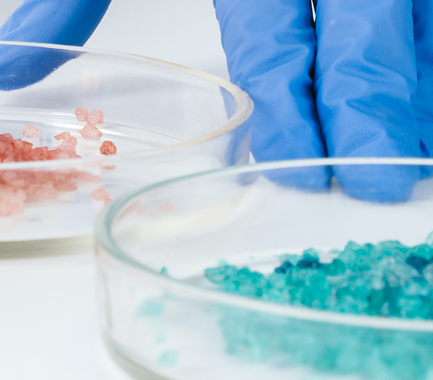Your contact
PENPET-Team - Hamburg

Christoph Meister
Sales
Tel. +49 (0) 40 - 675 7 99 30
sales@penpet.de
Get in touch with us.
Diisononyl 1,2-cyclohexanedicarboxylate (DHIN)
Diisononyl 1,2-cyclohexanedicarboxylate (DHIN) describes a mixture of organic substances that belongs to the group of carboxylic acid esters and is used by industry primarily as a plasticizer in plastics production. Even the production starts with isomeric mixtures of substances, so that the product obtained also contains molecules of different structures. Diisononyl 1,2-cyclohexanedicarboxylate is produced either by hydrogenation of diisononyl phthalate or in the course of a Diels-Alder reaction from diisononyl maleate and 1,3-butadiene.
The mixture of substances serves as a plasticizer for polyvinyl chloride (PVC) and other plastics. It is also suitable for contact with food and health-sensitive areas of application and replaces substances containing phthalates. For example, diisononyl 1,2-cyclohexanedicarboxylate is used in the manufacture of medical products, children's toys and food packaging.
At PENPET you can easily and reliably order the required amount of 1,2-cyclohexanedicarboxylic acid diisononyl ester. We look forward to receiving your inquiry for an individual offer. Delivered as liquid in tank containers or packed in IBCs.
CAS no. 166412-78-8
EINECS no. 431-890-2
Molecular formula: C26H48O4
Synonyms: Diisononylcyclohexane-1,2-dicarboxylate, diisononyl cyclohexane-1,2-dicarboxylate, DINCH, Elatur CH, Hexamoll DINCH
Areas of application: Use as a plasticizer for polyvinyl chloride (PVC), e.g. in the manufacture of food packaging, medical products and children's toys
More Information
Diisononyl 1,2-cyclohexanedicarboxylate (DHIN) is a complex mixture of different isomers. All the substances contained have in common the structure of one part 1,2-cyclohexanedicarboxylic acid and two alcoholic components. These partial structures are connected via two ester groups, with the two carboxy groups of the carboxylic acid and the two hydroxyl groups of the alcohols being dissolved.
The component 1,2-cyclohexanedicarboxylic acid already has different configurations due to the possible cis and trans arrangements of its carboxylic acid groups. The alcoholic residues with the molecular formula C9H19 are present as nonyl alcohol, methyloctyl alcohol, methylethylhexyl alcohol, etc., also with different structures and sometimes also introduce a stereoisomeric variance into the structure of the esters formed. Diisononyl 1,2-cyclohexanedicarboxylate therefore contains numerous different compounds. The substances in the mixture differ from the structurally similar plasticizer diisononyl phthalate by the hydrogenation of the originally present phenyl group and the subsequent lack of aromatic character of the compounds.
Diisononyl 1,2-cyclohexanedicarboxylate (DHIN) is a colorless, almost odorless mixture of substances that is in the form of an oily, non-volatile liquid. It is nearly insoluble in water and floats on contact due to a marginally lower density. In contrast, diisononyl 1,2-cyclohexanedicarboxylate can be readily dissolved in organic solvents.
Diisononyl 1,2-cyclohexanedicarboxylate (DHIN) is stable and not very reactive, but reacts with strong oxidizing agents. Although the mixture of substances is combustible, it is difficult to ignite and is not considered explosive. Irritant and harmful gases are released during thermal decomposition.
Diisononyl 1,2-cyclohexanedicarboxylate (DHIN) is not considered to be acutely toxic. There is no known damage to health damage resulting from handling the mixture of substances. However, direct skin or eye contact may cause slight irritation. In this case, thorough rinsing of the affected body parts with water is recommended. If the substance is swallowed, rinse out the mouth and drink water.
